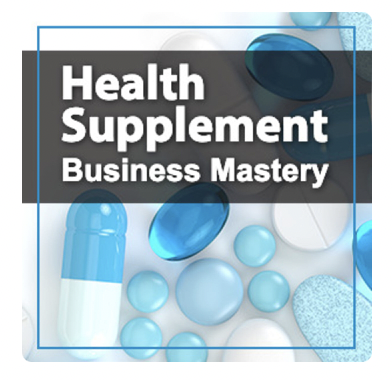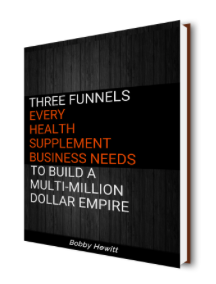(What Nearly Everyone Overlooks)
A free plus shipping funnel is a great way to bring in new buyers to your business. They are a great low-end offer which reduces the friction of price. Plus they are a great way to acquire “buyer opt-ins” which are way more valuable than just email opt-ins for a lead magnet.
But, scaling a free plus shipping offer with cold traffic can be very tricky.
There are a few pitfalls to watch out for. But if you understand how to look at your numbers you can make a free plus shipping funnel work just as well as any other front-end funnel. If you understand the offer psychology and the economics you can make it even better.
The Economics of A Free Plus Shipping Funnel Front-end
At the start of the economic challenge is the nature of the free plus shipping funnel offer. And the obvious fact is that your front-end revenue is just the price of shipping, which is very low.
Typically there is a limit for what you can charge for just shipping and still convert new customers. Generally, this ranges from $1.95 to $9.00. With $4.95 as the most common price point that you see on such offers.
At Creative Thirst, our conversion optimization agency for health clients, I’ve tested shipping prices and have found some elasticity. New buyers were just as willing to pay a few dollars more than the standard $4.95 shipping price. International buyers were even okay with paying $12 for shipping.
Of course, it depends on the perceived value of the product and what the perception is to ship it. There is a threshold where customers start to believe you’re pulling one over on them, by overcharging for shipping. Keep in mind that lower shipping prices rarely make up for the increase in conversion on the economic side of the equation.
Since you’re not netting $60 for a bottle of dietary supplements or more for multiple bottle options, you have to make up the difference within the funnel. One way to do that is through upsells and another is through time, which we’ll cover a bit later.
The typical funnel makes up a lot of the revenue on the front-end offer, but in a free plus shipping funnel, your front-end revenue is not only reduced drastically but you’re also in the hole on the cost of goods. Sure you can charge for the cost of the product and the actually shipping in the price of the shipping-only offer. But typically, you’re at best breaking even and you haven’t even added advertising costs. The ideal situation rarely works out the way everyone says it does.
Don’t Panic
On a free plus shipping funnel your day one revenue has to make up as much as it can in costs for the economics to work.
In full disclosure, we’re going to take a look at some math. Don’t panic. We’ll take it slow and walk through each formula in detail. Plus there will be a link to a Google Doc that you can copy to make it easier for you. But an understanding of the core concepts which we’ll cover here are critical to your success.
The first metric you want to keep an eye on is your day-one return on ad spend.
This ratio is calculated as:
Day 1 Return On Ad Spend = Total Revenue /Total Shipping And Handling Costs
This is your breakeven point, or more accurately how much you’re going in the hole on day one. Because with a free plus shipping offer you’re more likely to go negative due to the low margin.
Getting your conversion rate up will only help a bit. Conversion is a bigger lever in other mid-ticket or higher-margin front-end offers. It’s not such a strong lever on free plus shipping funnels.
You have to resolve to know that you are going to go negative with this type of offer, where the margins are already negative or razor-thin.
The next metric to watch is day one return on investment. It’s your return on your overall investment, including the cost of goods sold, and is calculated as:
Day 1 Return on Investment (ROI) = Total Revenue / (Total Shipping And Handling Costs + Cost Of Goods Sold)
Day one ROI is a more accurate view of your advertising return. There are a lot of costs not included in this metric. For example, production costs for creating and maintaining the funnel. Largely, because they’re made up on the backend.
Both of these metrics are good to keep an eye on but are not likely to get you to break even. To do that you have to go deeper into the one or two metrics that are crucial to a free plus shipping funnel.
The Importance of Lifetime Value
So few marketers look at Life Time Value (LTV), instead, they focus on day-one revenue for cold traffic. But the lifetime value of a free plus shipping funnel is typically where you make the numbers work.
LTV is a prediction of the net profit attributed to the entire future relationship with a customer. When you hear that the money is in the backend, this is where that money is.
But let’s not put too much weight on LTV at the expense of gross profit.
Life Time Value vs. Gross Profit
While revenue is great, profit is better. And you shouldn’t only look at LTV without also looking at gross profit to scale a free plus shipping funnel.
First, let’s briefly and clearly define gross profit before we move on. Gross profit is the money you’re left with after deducting costs. It can be calculated with the formula: Gross Profit = Revenue – Cost of Goods Sold (COGS).
Gross Profit for a free plus shipping funnel can be broken down into two metrics.
First, the “Immediate Gross Profit Life Time Value” which is, the gross profit you make on day one. A much more valuable day-one metric than day-one revenue, and it is calculated as…
Immediate Gross Profit LTV = Total New Customer Gross Profit LTV – Total New Customer Cost Per Acquisition
The second metric “Total New Customer Gross Profit Life Time Value” is the Gross Profit Life Time Value you make on new customers generated from the funnel. This is the true lifeblood of a cold traffic, free plus shipping funnel. It’s calculated by…
Total New Customer Gross Profit LTV = (Total Revenue – Total COGS + Total Cost of Sale “including costs for affiliate commissions”) / Total New Customers
For a free plus shipping funnel, a negative Immediate Gross Profit LTV is sacrificed in order to gain a positive Gross Profit LTV in the future.
As you can see in the example below your campaign is in the negative for 45 to 75 days before hitting a positive Gross Profit LTV gain on day 100
The reason is that free plus shipping funnel buyers are “less valuable” on day one. They are simply spending less in general because they are a low front-end ticket buyer. i.e. just paying shipping. As a result, their Immediate Gross Profit LTV is negative and it takes longer to get to profitability. The question is can you float the cashflow to keep bringing in the traffic and pay the total cost of goods sold? And are you willing to wait to turn a profit? If so, a free plus shipping funnel could absolutely work as a cold traffic acquisition funnel.
But our discussion on the economics of a free plus shipping funnel would not be complete without…
The Economics of Average Order Value
Average order value (AOV) is the average dollar amount spent each time a customer places an order in your e-commerce funnel.
To calculate your AOV simply divide your total funnel revenue by the total number of front-end funnel orders.
Average Order Value = Total Revenue “including up-sell revenue” / Total Number Of Front-end Sales
The AOV for a free plus shipping funnel or any funnel for that matter, allows you to get new buyers for free.
An AOV that’s higher or breakeven with your cost per acquisition (CPA), allows you to spend more per customer on ads. So that you can scale how many new buyer you can acquire.
The majority of your AOV will come from the front-end conversion, with your upsells helping a bit. However, with a free plus shipping funnel your front-end is just the shipping which is too low to really make the numbers work right off the bat.
To make it work you have to understand…
The Free Plus Shipping Buyer And The Real Reason They Work
The free plus shipping funnel buyer is different than a higher ticket buyer. The psychology is different.
The real reason they work economically is because of the added forced subscription that comes with a free plus shipping nutritional health supplement trial bottle.
The offer works like this: You get one bottle of this supplement free if you just pay shipping and in 30 days you’ll automatically get another bottle at full price and every month thereafter.
This built-in continuity makes the economics of the offer work because you’re going to collect the full price in month two from a portion of your buyers. Plus those that do stick, usually stay for about two or three months on average, before canceling. Some even go on to buy other backend products from you.
The Big Free Plus Shipping Funnel Question
A question I get asked quite often is: “Can you scale a free plus shipping funnel with cold traffic?”
The short answer is: Yes.
However, you need a constant eye on the economics. More closely than other funnels, due to the nature of the inherent risks and longer cycle of customer lifetime value.
Going into such a funnel is completely doable to scale your business. As long as you understand the economics of how such a funnel works and have a tight grasp on your data. And if you have a continuity front-end product (which dietary supplements and other consumable products have inherently built-in), then you can make a free plus shipping funnel with cold traffic work.
By the way, here’s a link to a Google Doc that you can copy to model out your free plus shipping funnel numbers.
Discover the 3 funnels that can help your health supplement business succeed.

Listen to the Health Supplement Business Mastery Podcast for for dietary supplement entrepreneurs and marketers.




